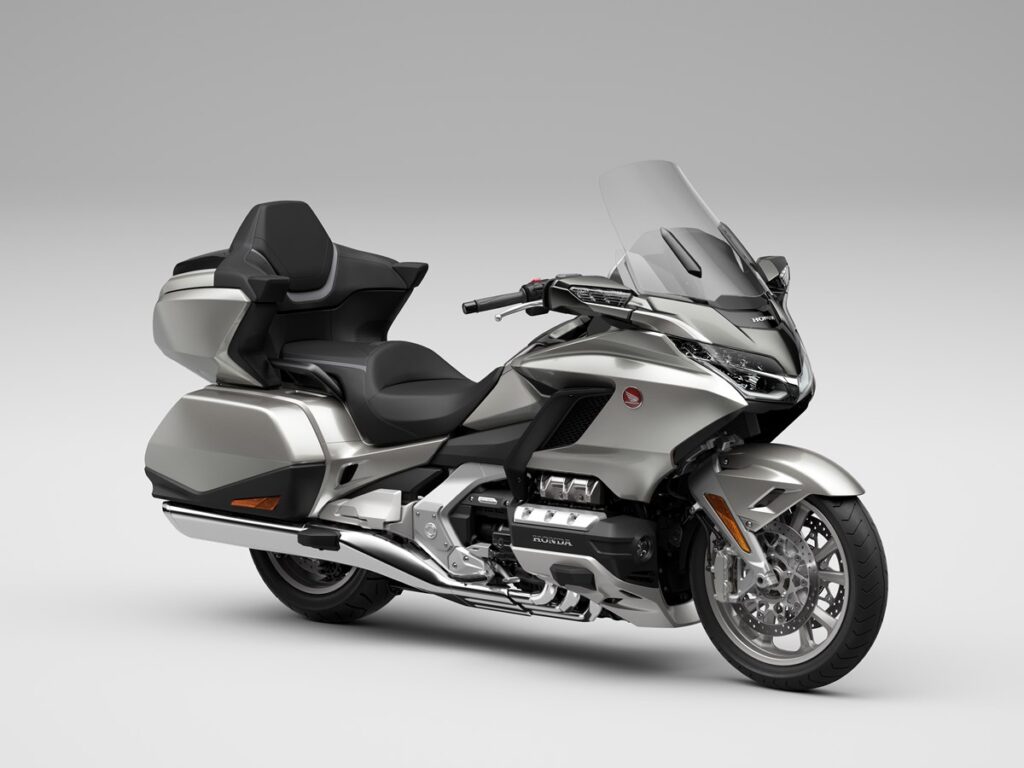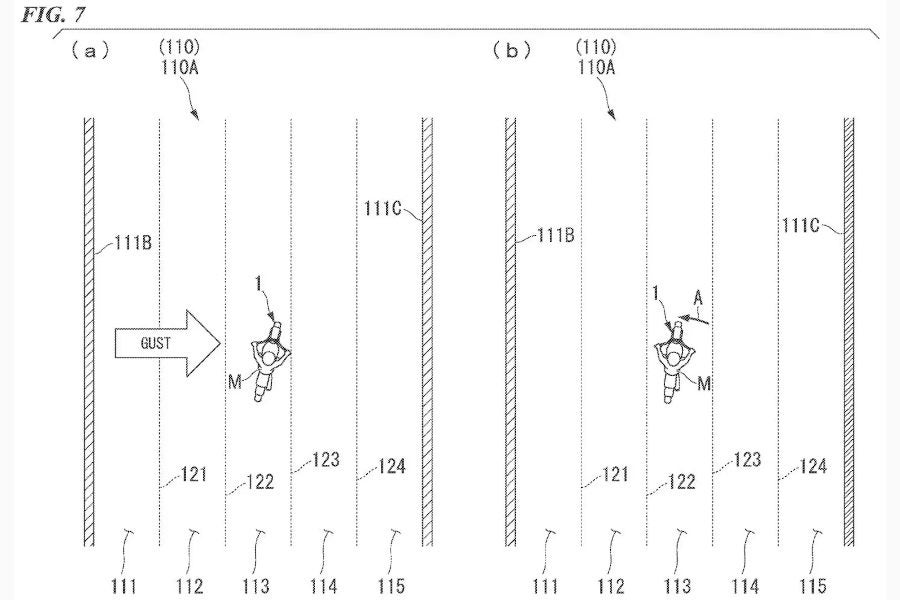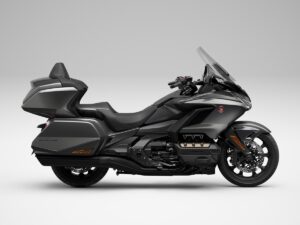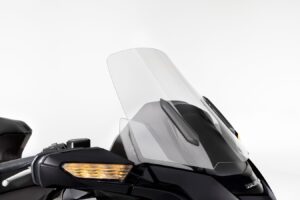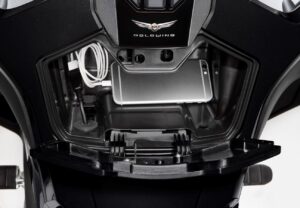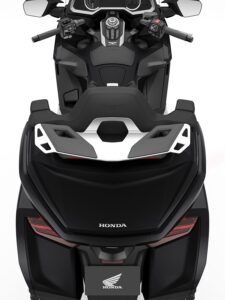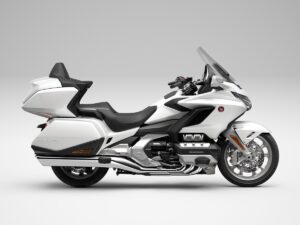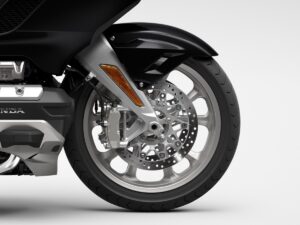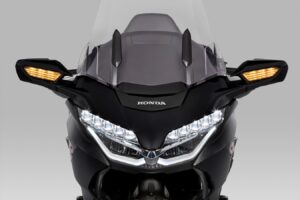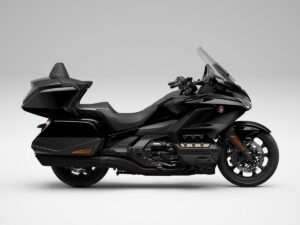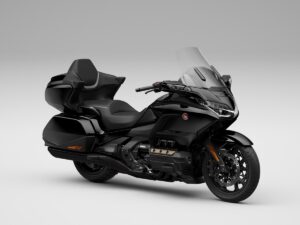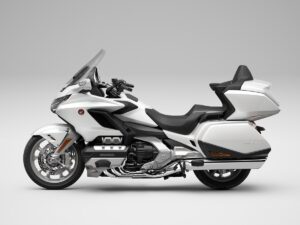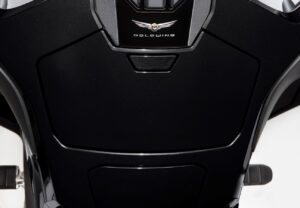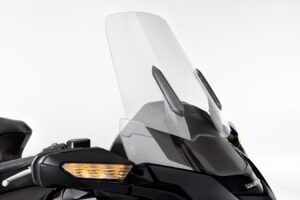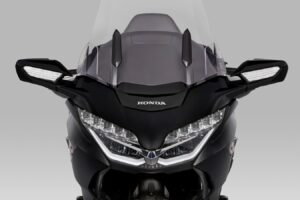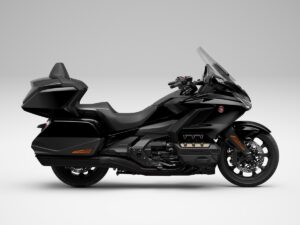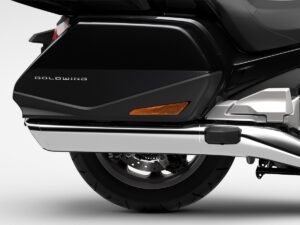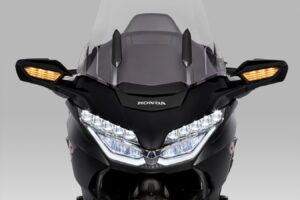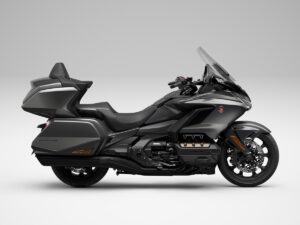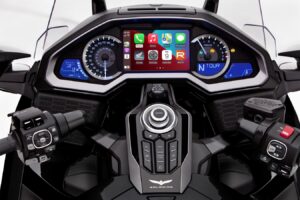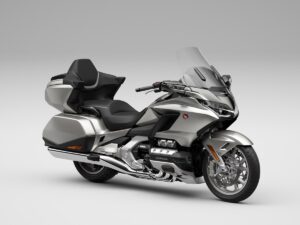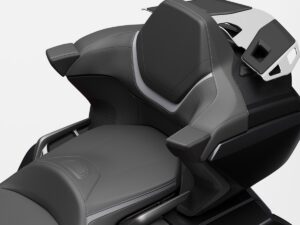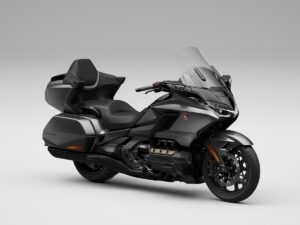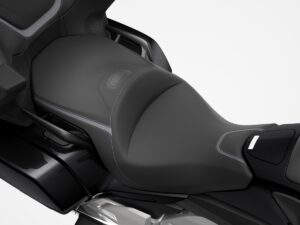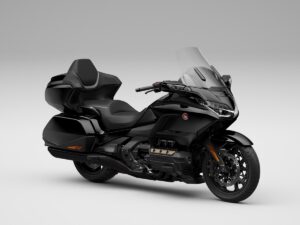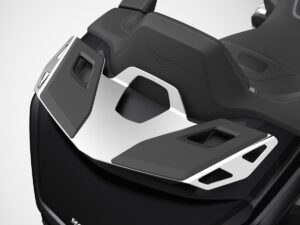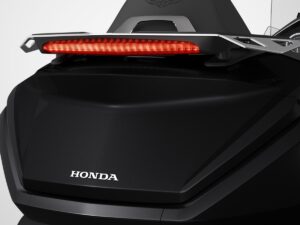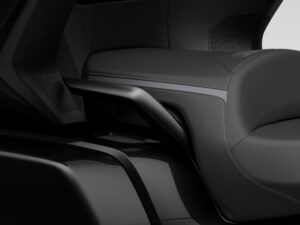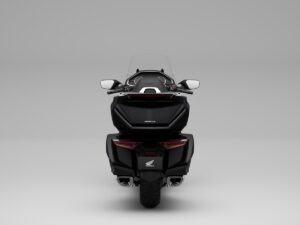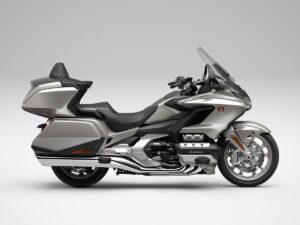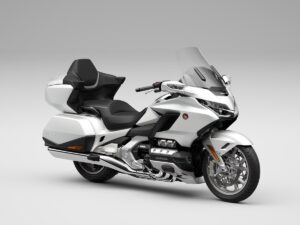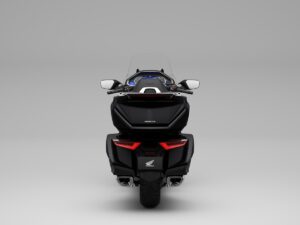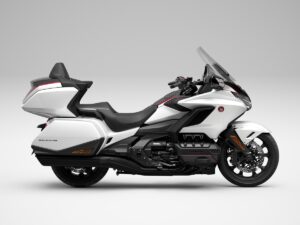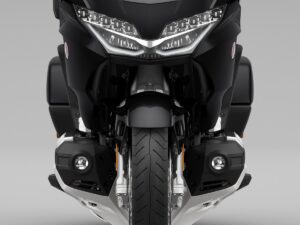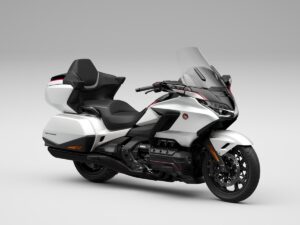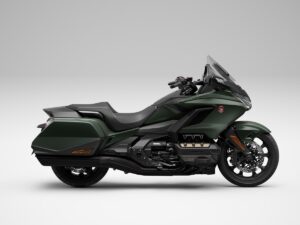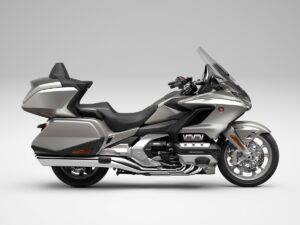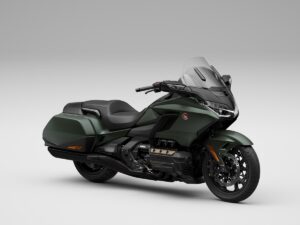Honda has been actively developing self-steering rider-assistance systems, with recent innovations focusing on countering crosswinds and introducing haptic feedback for riders. The concept aims to strike a delicate balance between providing assistance and maintaining rider control.
The system, detailed in patents, utilises a servo-assisted steering device integrated behind the steering head, resembling a rotary steering damper.
It receives input from various sensors such as acceleration, speed, steering torque, angle sensors, radar, and a camera. This data allows the onboard computer to interpret the rider’s intentions and respond accordingly.
Under normal conditions, the system remains inactive, allowing the rider full control. However, when necessary, such as in crosswind situations, it intervenes by dividing the lane into virtual lanes and keeping the bike within them.
This feature is designed to integrate with adaptive cruise control, enhancing safety by considering nearby vehicles and road edges.
It is also part of Honda’s Lane-Keep Assist System, which it has been developing and refining since 2022.
Furthermore, Honda is exploring haptic feedback as a means of alerting riders. Similar to systems used in cars, vibrations are applied to the handlebars to convey warnings or alerts.
This method aims to provide a tangible form of communication, as audible signals and dashboard lights may not be as effective for motorcycle riders.
The implementation of these technologies represents Honda’s commitment to enhancing rider safety and comfort through advanced assistance systems. However, the effectiveness and user acceptance of these innovations in real-world scenarios remain to be seen.
The system is also part of Honda’s plan to end all fatalities involving Honda motorcycles by 2050.

